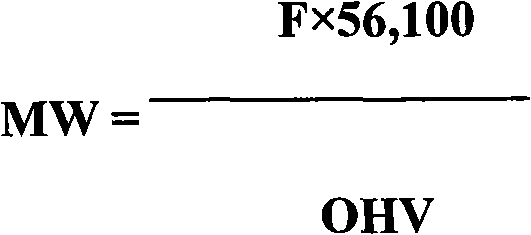Method for refining low-odor polyether polyol
A technology of polyether polyol and refining method, which is applied in the direction of preparation of ether, medical preparations of non-active ingredients, pharmaceutical formulas, etc., can solve the problems of substances that cannot be used on a large scale and cannot remove odors, and achieve odor reduction and effective obvious effect
- Summary
- Abstract
- Description
- Claims
- Application Information
AI Technical Summary
Problems solved by technology
Method used
Image
Examples
Embodiment 1-4
[0027] In the following examples, 1000g of various crude polyether polyols (as described below) were added to a 3L stainless steel reaction kettle, heated to 70°C, 10g of pure water and 10g of hydrated magnesium silicate were added, and stirred for 30 minutes. Filter through a funnel, re-add the polyether polyol obtained after filtration into the reaction kettle, add 10g of pure water and 10g of diatomaceous earth, stir for 30 minutes, carry out vacuum dehydration for 1 hour, keep the temperature at 105±2°C, and then use a cloth Filter through a funnel to obtain refined polyether polyols.
[0028] The present invention is shown in Table 1 and Table 2 to the removing effect of the impurity in the polyether polyol used. Analysis is performed by chromatographic analysis of the liquid phase gas.
[0029] Polyether polyol 1: Ethylene oxide / propylene oxide polyether prepared from glycerol, which is branched, with an OH value of about 21, a molecular weight of 8000, KOH%=0.3%.
[0...
PUM
 Login to View More
Login to View More Abstract
Description
Claims
Application Information
 Login to View More
Login to View More - R&D
- Intellectual Property
- Life Sciences
- Materials
- Tech Scout
- Unparalleled Data Quality
- Higher Quality Content
- 60% Fewer Hallucinations
Browse by: Latest US Patents, China's latest patents, Technical Efficacy Thesaurus, Application Domain, Technology Topic, Popular Technical Reports.
© 2025 PatSnap. All rights reserved.Legal|Privacy policy|Modern Slavery Act Transparency Statement|Sitemap|About US| Contact US: help@patsnap.com

